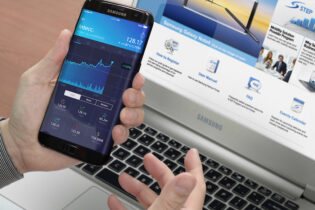Products and Services Go Hand-in-Hand
Services are the bread and butter of a partner’s business. According to The 2112 Group, the average solution provider earns between one-half and two-thirds of its revenue and profit through services – managed, professional, and cloud.
Another way of looking at services is in pure dollars. For every $1 a solution provider takes in, at least 50 cents is a result of its skills and expertise.
The value and importance of services aren’t lost on Samsung partners. More than eight out of 10 of them offer pre-sales consulting services through which they help customers identify and define their technology needs, and design solutions that address those needs.
Another three-quarters of Samsung partners offer managed services, providing post-sales monitoring, maintenance, and management of hardware and software deployed in their customers’ infrastructure. Around the same number of partners are offering integration services, in which they meld different technologies together to create systems. And roughly six out of 10 Samsung partners offer some form of cloud service, either applications (SaaS) or infrastructure (IaaS).
Services are an important part of the partner revenue equation. While some hardware products and software sold through licensing offer significant inherent margins, the yield is often a one-time event. If you like immediate gratification, product sales are your thing, though it’s important to be aware that margin will fluctuate from deal to deal.
Services sales, though, are more predictable – and more profitable over time. The periodic recognition value of managed and cloud services revenue is often significantly lower than hardware and product sales. But recurring services revenue compounds over time. While you can make a dollar today on a product sale, you’ll make $12 over the course of an annual managed or support contract.
What can’t be overlooked is how services can be the true profit driver for a solution provider business, while hardware and software act as the catalyst for capturing more managed and professional services – especially when based on Samsung products.
Services carry margins two to three times higher than hardware and software. Moreover, recurring revenue can produce more cumulative revenue and profit than any piece of hardware ever could. While you shouldn’t abandon the notion of making money on hardware and software, using products as a means of capturing and expanding services is an effective growth and profitability strategy.
Here are some examples.
- Chromebooks: Google offers a Web-based Management Console that can provide configuration, management, and security for up to several thousand machines deployed in business environments. You can use the console to provide support to customers on a recurring-fee basis.
- Windows-based PCs: Remote monitoring and management of Windows-based PCs are a mainstay of managed services. Standard RMM applications support the management of PC fleets. Remote connection applications and cloud-based services facilitate many troubleshooting issues that help desks encounter.
- Tablets and Wi-Fi devices: Tablets and other Wi-Fi devices can be managed similarly to PCs and Chromebooks. They require different software, often referred to as mobile device management (MDM) or enterprise mobility management (EMM). While many enterprises manage their own tablets internally, a number of solution providers offer MDM as a remote managed service.
- Digital signage: Digital signage is more than just hardware displays; they require content and regular maintenance. Helping companies source and create content for digital displays is a lucrative business, as content needs refreshing more frequently than hardware.
- Printers: Printers are among the most used and overlooked devices in the network infrastructure. Managed print services (MPS) extend the value of networked, monochrome, color, and multifunction printers by helping clients to keep them functioning while containing costs.
- Cloud services: Cloud services are a tremendous enhancement to all devices. Through cloud-based and hosted assets, business applications, file sharing, storage, and security can be delivered as remote services.
In the services era, conventional hardware and software aren’t entirely without value. In many cases, hardware sales can lead to new or expanded managed and cloud services contracts. And through services, partners can recognize and anticipate the need for hardware refreshes. Ultimately, attached services will almost always produce greater returns than the one-time product sale. The thing to remember is that one never happens without the other.







